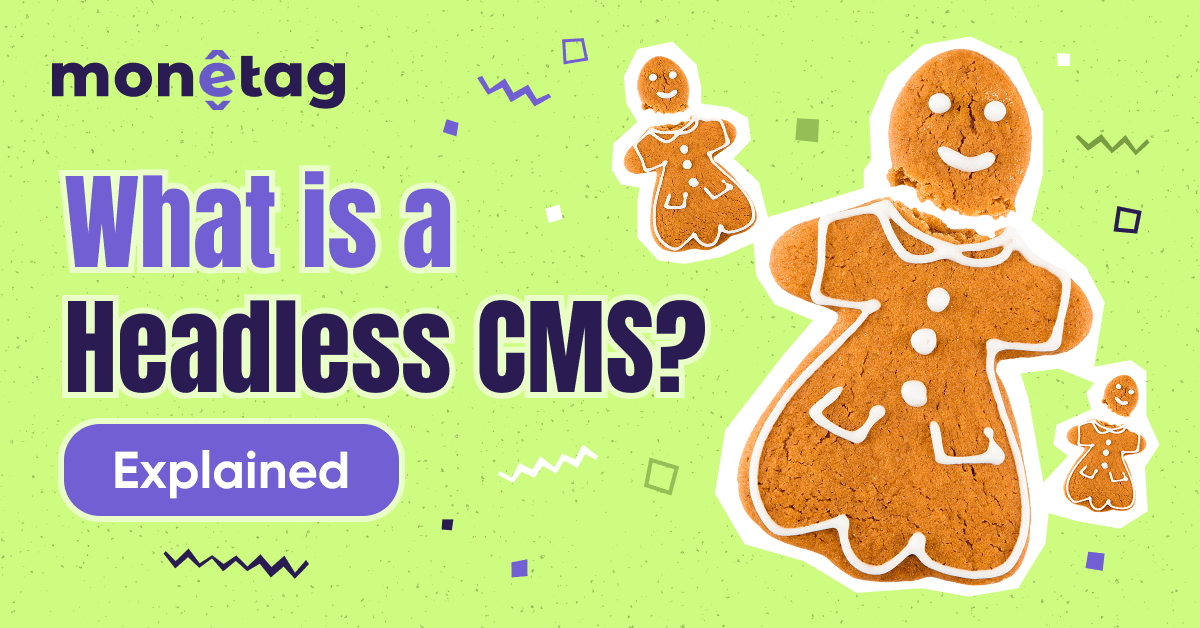| Feature | Traditional CMS | Headless CMS |
|---|---|---|
| Architecture | Back end + front tightly coupled | Back end only + APIs, frontend separate |
| Multi-channel delivery | Mostly web only | Website, apps, devices, IoT, all in one |
| Frontend freedom | Templates/theme lock-in | Use any stack: React, Vue, Astro, etc. |
| Speed & scalability | Can be slow, hard to scale | Faster, built for scale |
| Technical requirement | Lower barrier for basic sites | Requires more dev setup initially |
Cut the Head, Keep the Cash: What Is a Headless CMS?

Let’s get real: the web just grew a new head, and you need to start using it. Your content deserves more than a sluggish CMS holding it hostage. You want reach, speed, and money on tap. That’s where the headless CMS struts in. It slices off the old, bulky head of your traditional setup and serves your content everywhere it needs to be: web, app, voice, fridge screen (yep, even there).
This is traffic talk. Headless means faster pages (hello, SEO boost), cleaner code, and zero template drama. You control your content, your team moves faster, and your revenue doesn’t wait for updates.
So if you’re serious about growing your audience, scaling your channels, and monetizing like a pro, it’s time to give your content a new kind of freedom. Let’s cut the head off your CMS and watch your traffic soar in 8 simple steps.
1. What is a Headless CMS?
So, you want to know what is a headless CMS (Content Management System). Right, simply put: the content “lives” in the backend and gets delivered via API to any platform. Without a head, or frontend.
As Contentful puts it: this is a content management system that separates the presentation layer from the backend (where content is managed).
So, to resume your search for CMS, headless, this is it: content is stored once, and displayed anywhere. Allowing you more flexibility.
2. Headless CMS – a Valuable Asset

Image Source: Storyblok
You’re chasing traffic. Monetization. Scale. And a CMS inquestion gives you the infrastructure to:
- Go multi-platform (web, mobile, IoT, etc.) with the same content
Create content once, publish anywhere via API.
- Boost SEO and performance: faster load times, cleaner code, fewer legacy ties. Giving you improved performance and faster load times – a key benefit.
- Empower your team: your marketers update content, your developers build frontends. There’s no stepping on toes.
If you want to monetize traffic, you need speed + flexibility + control. Headless CMS gives you just that.
3. Headless CMS vs Traditional CMS
We like to make things simple and accessible. So we knew you’d like to compare headless cms vs traditional cms. Below you can see the differences and the edges.
So when you’re deciding if to make the move, ask yourself: Do I want rigid, single-channel publishing? Or do I want agility and growth?
If growth’s your answer, then go headless.
4. Best Headless CMS & Open Source Options
Among the most frequent searches when it comes to headless cms were: “best headless cms”, “open source headless cms”, “headless cms open source”, “free headless cms”. So, let’s see what all these are.
Free/hobby/test tier CMS
Many platforms offer free tiers. Some of the options you have are: Strapi, Directus, Hygraph, Agility CMS, Contentful, Ghost, Kontent.ai, Storyblok, Sanity, or Prismic.
Open source
If you want full control, self-host, and to customise, these are strong contenders:
- Strapi: leading open-source Headless CMS
- Payload CMS: Free, open source, developer-first
Best in market
Although a quick search might suggest Hygraph as the best headless CMS option, this might be just the result of more advanced SEO on behalf of this provider.
However, Redditors seem to prefer Storyblok, Payload, and even Sanity, or Directus might be more popular choices. These offer flexibility and performance.
5. Headless CMS SEO (Yes – You)
If you monetize traffic, SEO matters. So here are some considerations for headless cms seo:
- Because you decouple presentation, the front-end can be optimised for performance. Faster load times help rankings.
- A headless CMS allows structured content models, which search engines love (and future AI will too). AI search discoverability requires accurate, structured, and succinct content that addresses your audience’s questions. And a headless CMS makes this possible.
- But: you must ensure the front-end is SEO-friendly (e.g., server-side rendering, meta tags, etc). Headless gives you freedom – use it wisely.
Bottom line: If you treat headless cms seo as a core objective, you win.
6. 7 Actionable Steps for You
Are you ready to move? Here’s what you must do:
- Audit your current publishing stack: channels, performance, pain points.
- Pick one channel to migrate first (e.g., your blog). Launch a headless workflow there.
- Choose your platform: free-tier open-source vs. SaaS headless CMS.
- Build flexible content models (i.e., reusable blocks) so you can publish once, everywhere.
- Ensure front-end architecture supports SEO: server-side render, fast load, metadata.
- Monitor KPIs: page load time, content reuse across channels, traffic growth, monetization events.
- Scale: add mobile app, digital signage, new region – content already lives in one place.
7. Why pick Monetag?
Because we get it. Monetag is built for you – publisher, traffic warrior, monetization-seeker.
We know that every second counts, every channel matters, and every dollar of traffic should work.
And with our guidance, implementing a headless CMS isn’t just a tech upgrade. It becomes an actual revenue upgrade.
We can help you set it up for the win with Monetag Smartlink, Push notifications, Vignette banner and other formats! So when you’re ready to switch from site to platform, we’re your ally.
8. Final word
You’ve seen what headless CMS means, why it matters, how it stacks vs traditional, what your options are, and how to act.
Now, if you’re serious about traffic, growth, and monetization, a headless CMS isn’t optional anymore. It’s smart.
Make the move. Choose flexibility. Choose speed. Choose growth. And let Monetag help you get there.







